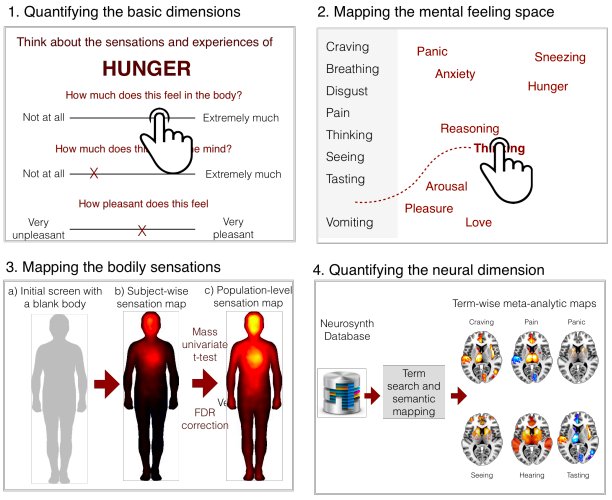Finally out "Maps of Subjective Feelings" with @aivoAALTO @LNummenmaa and J. Hietanen. pnas.org/content/early/… 1/7
In this study we run three web experiment asking how we perceive 100 common feelings by assessing them i) over 5 dimensional scales, ii) similarity between them iii) how they map on the body and iv) collected similar terms from @neurosynth 2/7 

Results showed 5 robust clusters with DBSCAN and visualization with tSNE gave clear components related to emotional valence as well as mental saliency. 3/7 

And finally we assesses the similarity of the representations of the various domains we tested as well as the semantic distance between the words and how they are represented as neurosynth terms. 5/7 

I conclude the thread with @aivoAALTO 's words "We have obtained solid evidence that shows the body is involved in all types of cognitive and emotional functions. In other words, the human mind is strongly embodied." 6/7
Bonus: all data and code are fully available zenodo.org/record/1291729 And for the sake of transparent #openscience, even the full GIT history! With first commit dating March 2016 (mostly me fighting with CSS to get the web experiments right; no bad words found in GIT history). 7/7
Try one of the experiments translated into English here emotion.nbe.aalto.fi/feelings_sim/ by arranging the 100 words inside the box (the closer the words, the more similar they feel to you).
Since @Twitter 's re-encoding of the video might lose some details, high quality version of the video with the maps can be seen here: onni.utu.fi/maps_of_feelin…
More details and high quality images for the press are available here emotion.utu.fi/maps-of-subjec…
• • •
Missing some Tweet in this thread? You can try to
force a refresh







